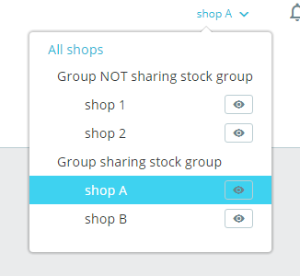You can manage your stock in your shop using the "Stock" page, in the "Catalog" menu. No set-up is required to activate stock management.
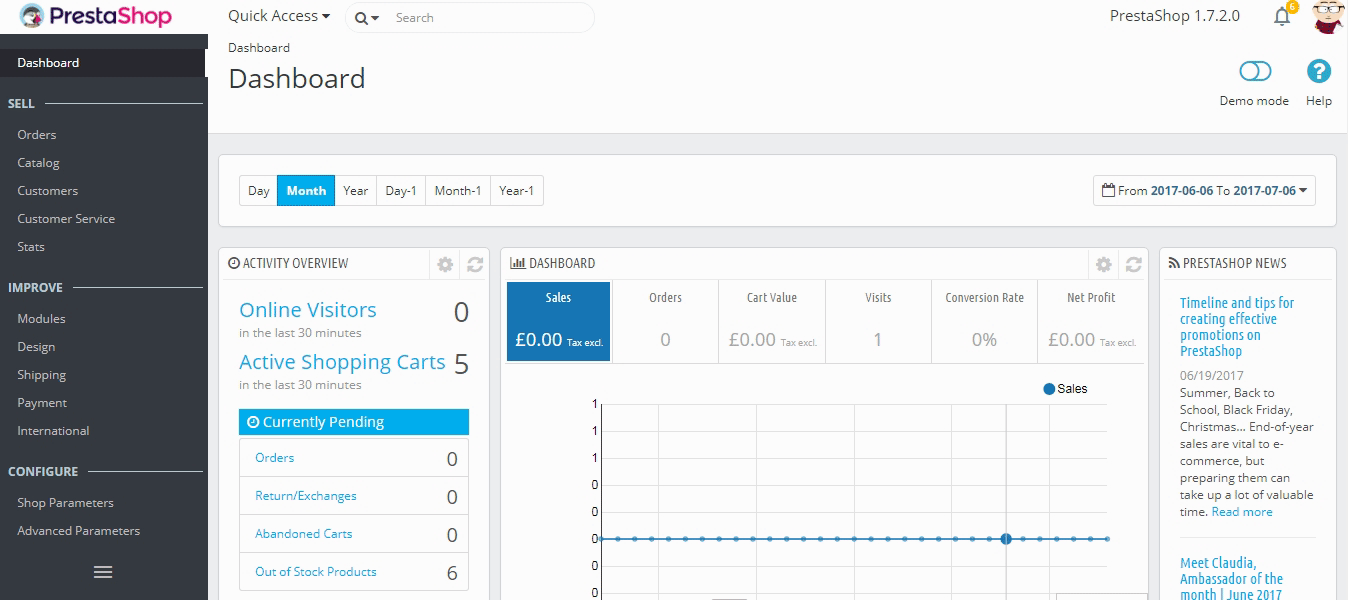
The stock management page consists of two tabs: "Stock" and "Movements".

By default, when you open the stock management page, the "Stock" tab is the opened tab. Inside this tab, you can have an overview of the stock of products in your catalog and manage their quantities. The "Movements" tab gives you an history of all the changes in quantities.
This tab contains a table presenting your products' stock, as well as search options and allows you to directly edit your products' quantities.
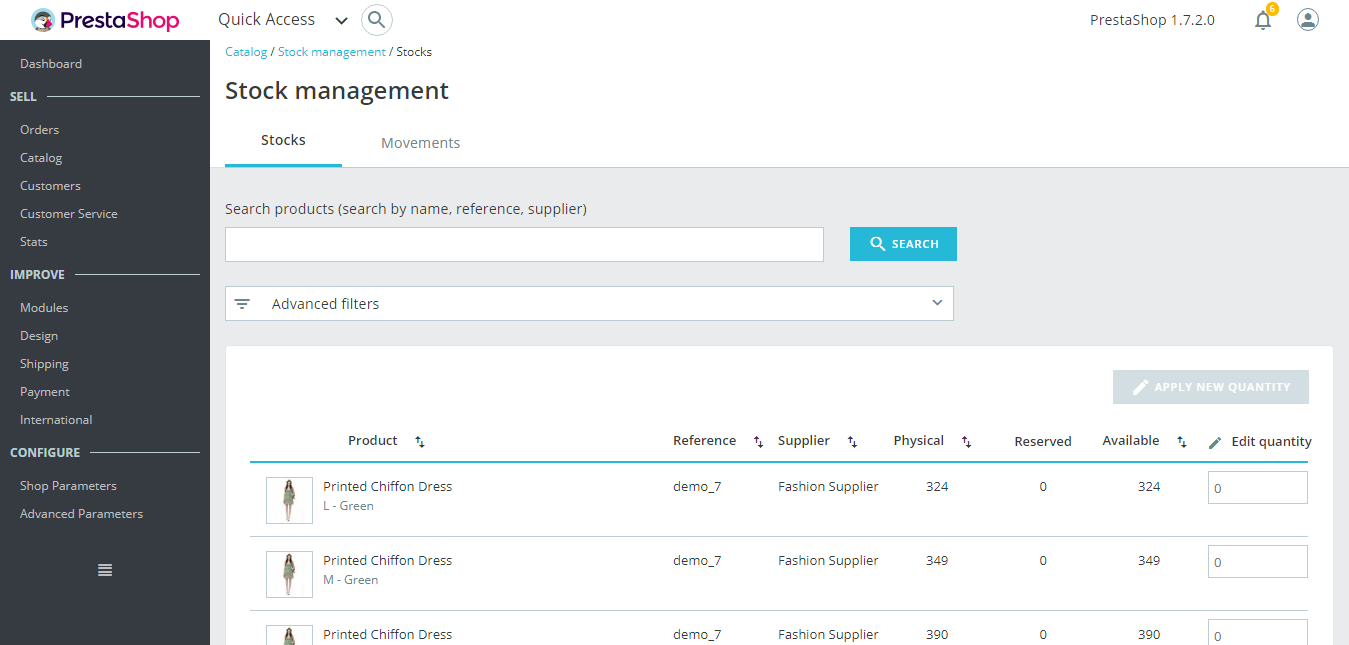
A table allows you to have an overview of your catalog stock at a glance.

Each line represents a product (either standard, virtual or bundle) or one of its combinations. The only difference is that combination attributes are displayed just below the product’s name.
The table contains the following columns:
Image thumbnail, to help fast visual recognition.
Product’s name and when it’s a combination, its attributes’ values.
Product reference. In case a combination has its own reference then it’ll be used instead of the parent’s reference.
Supplier. In case several suppliers are assigned to a product, only the default supplier will be shown here.
Physical stock, which represents the quantity you actually have physically in your storage.
Reserved stock, which represents the quantity of products that are currently in an open customer order that has not been shipped yet.
Available stock, which is the quantity available for sale.
Edit quantity. This input allows modifying the quantity manually. See below.
Starting from version 1.7.2.0, PrestaShop introduces three different notions of stock, which are different from the ones used in Advanced Stock Management in the 1.6 versions.
|
At any time, these 3 notions of stock are linked by the following equation: Physical stock - Reserved stock = Available stock Editing the physical stock will also affect the available stock, and vice-versa. |

While editing the quantity, you’ll see an overview of the resulting final stock:

If you want to edit multiple quantities at the same time, you can also edit the quantities of several products and then validate it all with the “apply new quantity” button.

At the top of the tab, you’ll find two features to quickly look for any product. The search bar is designed for use-cases where you know which product you’re looking for because you either have in mind its reference, name or supplier. While the advanced filters allow you to browse more options to fine-tune your search.
The search bar looks for:
product’s name
product’s reference
supplier
[beta as of 1.7.2.0] attributes’ values. This allows you to look for a specific attribute value like color. When typing ‘green’, you’ll see all products which share this color attribute value. This is still in beta though, and might not work with too short attribute values like with sizes: ‘S’, ‘M’, ‘L’.
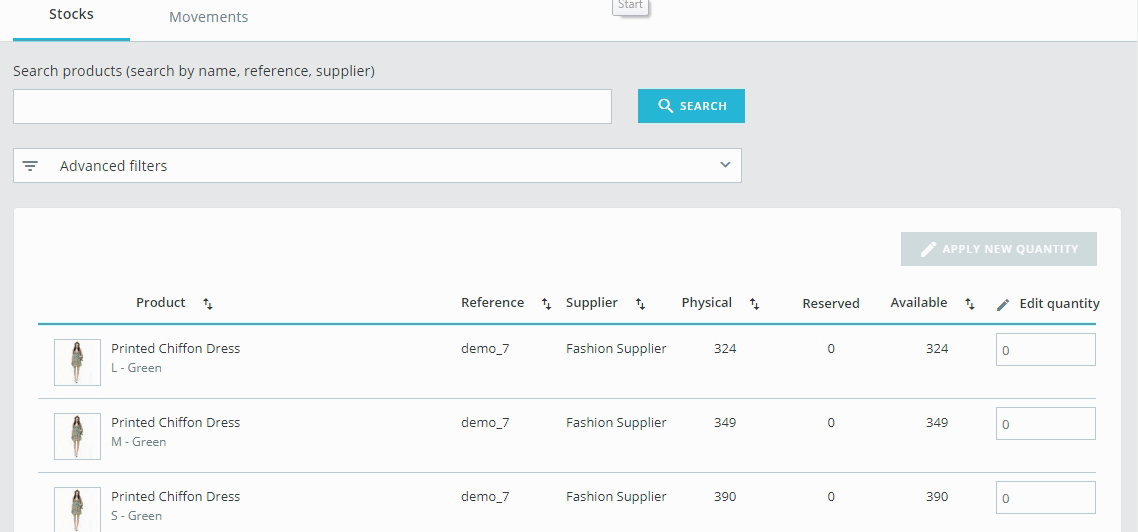
In the ‘Stock’ tab, advanced filters contain:
a supplier filter, which allows you to quickly browse available suppliers and choose one or several.
a category filter with an expandable tree.

The table of stock movements provides you with a log of all the stock changes. Because it’s an history of previous stock movements, this table only has an informative role and therefore cannot be edited.
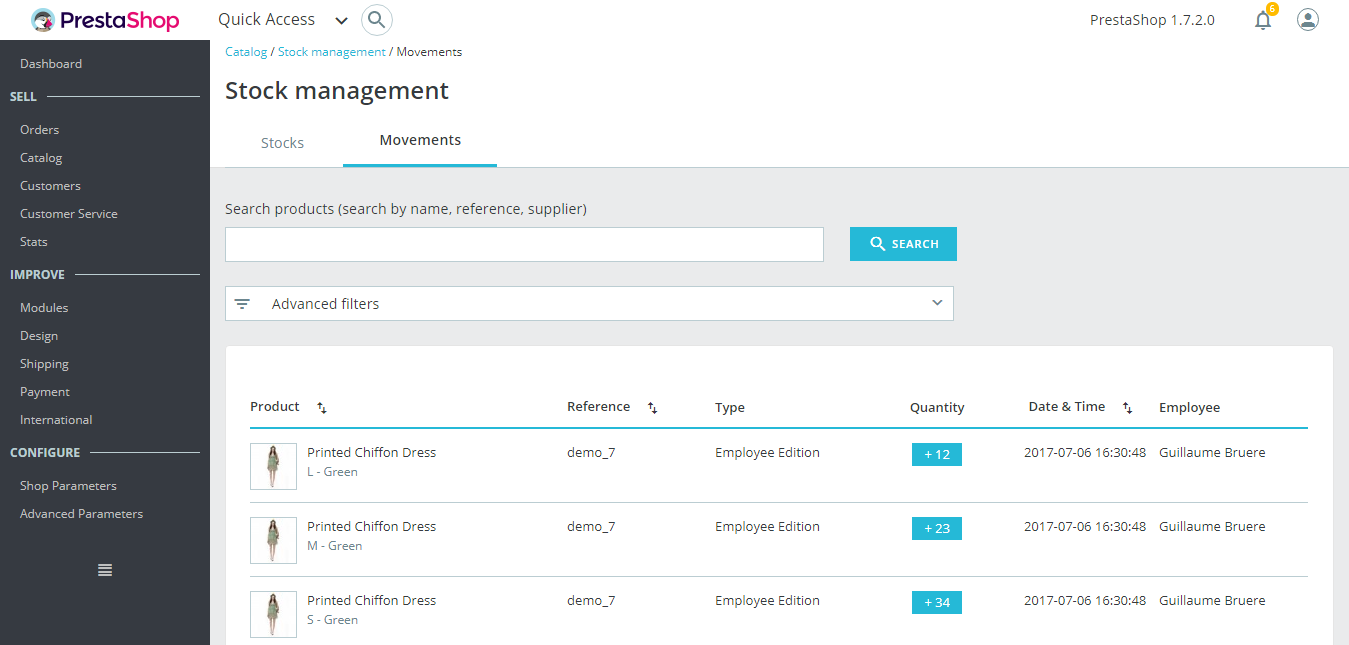
The structure looks similar to the stock table but here each line corresponds to a change in physical quantity for a product or combination. It contains the following columns:
Image thumbnail, to help fast visual recognition.
Product’s name and when it’s a combination, its attributes’ values.
Product reference. In case a combination has its own reference then it’ll be used instead of the parent’s reference.
Movement type. It represents the reason why a product’s physical quantity has changed.
Quantity added or removed. This delta is formatted with a + or - label to facilitate visual recognition.
Date and time, which is the exact server time stamp when the change occurred.
Employee, which is the name of the person responsible for the change.
As of version 1.7.2.0, three movement types can be created when triggered by the following events:
Manual edition by an employee, when for instance you modify a product’s quantity inside the stock table.
Customer order, when an order switches from a status equivalent to ‘not shipped’ to another status equivalent to ‘shipped’ (and vice-versa). For instance, when you ship an order that was under preparation, this will create a stock movement, as the physical quantity of items shipped literally leaves your warehouse.
Returned products, when you refill a product’s stock after receiving and accepting the merchandise return.
In the last two cases, the movement type in the table becomes an hyperlink to the corresponding customer order, so you have more context about this type of movement and don’t have to cross-check time stamps between the stock movements and orders tables.
See above. The search has exactly the same behavior as in the "Stock" tab.
In the ‘Movements’ tab, advanced filters contain:
a movement type filter, which allows you for instance to look for stock movements related to customer orders.
an employee filter.
a date range filter, if you’re looking for stock movements which happened during a specific period.
and a category filter, like in the ‘Stock’ tab.

This new stock management system is compatible with multi-store. For obvious reasons, if you have multiple shops inside a group where stocks are not shared, you cannot manage your stock in “all shops” or “group” context. If you try to do so, you might see the following error message:

Instead you have to select a shop in which you can work to edit its stock.
If you’re using a group of shops that share the same quantities, you’ll also have to select a unique shop context instead of a group but any change you make in a shop will also affect the other shops.
